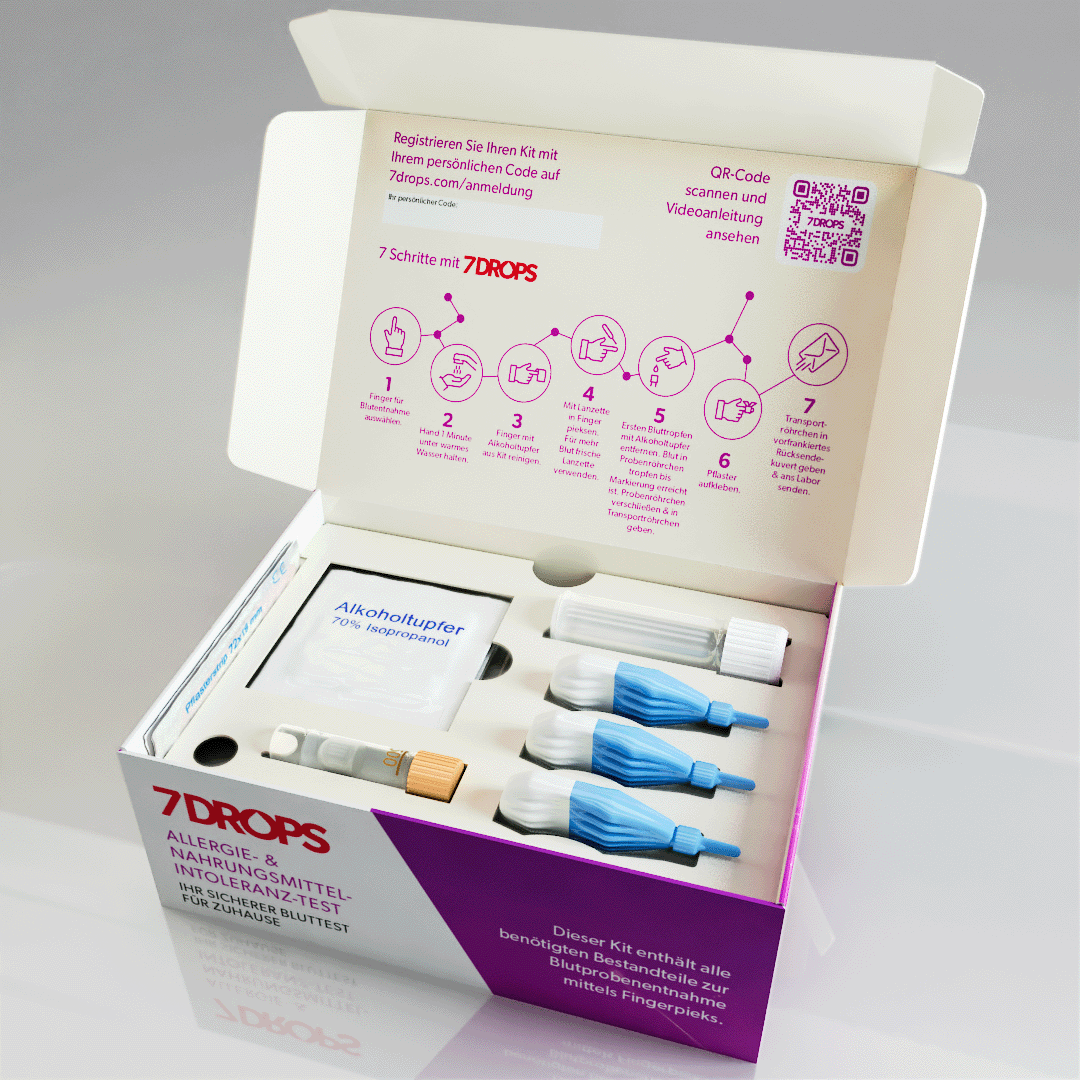Allergens & IgE antibodies explained
Simply put, an allergen is any molecule that binds IgE antibodies (a type of protein in the body). IgE antibodies are part of our immune system and play a big role in the allergic reaction. Not all allergens are proteins though – examples for non-protein allergens are drugs like penicillin or the antiseptic chlorhexidine.
Here is an example for a very common allergen and the reaction it triggers in the body’s immune system. When a person is allergic to grass pollen, their immune system mistakes a usually harmless substance as something that is harmful for the body. The immune system wants to protect the body and produces IgE antibodies to fight the perceived “harmful” substance. Now, a whole chain of events starts in the body. This leads to allergy symptoms such as sneezing, itchy, watery and red eyes, and a runny or blocked nose, leaving the allergy patient feeling miserable.
What is a cross-reaction?
Most allergens can induce allergen-specific antibodies, which means that they are sensitizing allergens that can cause allergic symptoms. If an allergen is non-sensitizing, it can only cause allergic reactions if a person had previous contact with a related sensitizing allergen. This is called a cross-reaction.
An example would be the birch allergen Bet v 1 as a sensitizing allergen, and the related apple allergen Mal d 1 as a non-sensitizing allergen. The apple allergen often cross-reacts with the birch allergen, despite not causing allergic symptoms by itself. This means: If a person is having allergic reactions to birch pollen, it is possible that they will also have allergic reactions when eating apples.
In the case of cross-reactions between pollen and raw fruits, we speak of oral allergy syndrome (OAS). Typical OAS symptoms include an itchy mouth, swelling of lips, mouth and tongue and a scratchy throat. The symptoms are usually show up around the general mouth and throat area and normally do not progress beyond that. Treatment is not necessary as the symptoms subside quickly if the patient either swallows the fruit or removes it from the mouth.
Molecular allergy diagnostics
The basis of allergy diagnostics is built on detecting specific IgE antibodies in a person’s blood or skin which react to allergen extracts from allergen sources such as pollen, dust mites or pet dander. Various conventional skin and blood allergy testing methods are based on this principle.
Over the past three decades, molecular biology has evolved a lot. It now allows scientists to identify and characterize allergens in great detail on a molecular level. These days, the scientific and medical community can access a largy allergen database for research purposes.
IgE antibody testing: singleplex and multiplex assays
There are two methods for testing IgE antibodies in molecular allergy diagnostics: singleplex and multiplex assays. “Assay” describes the investigative analytic procedures in laboratory medicine.
In a singleplex assay run, only one analyte is measured per analysis. In a multiplex assay run, several analytes can be measured in a single analysis. While singleplex assays guarantee a maximum of sensitivity in the analysis, multiplex assays provide a broad panel of related, cross-reactive molecules and therefore give a near complete picture of a patient’s sensitization status. The more accurate a patient’s diagnosis is, the easier it is to implement individualized therapy.
For the 7DROPS allergy and food intolerance test, we use multiplex assays to test up to 300 allergens from only 100 microliters of serum or plasma.
The benefits of using multiplex assays are the time and cost efficiency. Multiplex assays have a simpler design and a shorter turnaround time to generate results. They also require less reagents (substances to cause a chemical reaction) and less technician time overseeing the process.
Benefits of in vitro molecular diagnostics
Using in vitro molecular diagnostics to test immunological diseases such as allergies and food intolerances combines the latest scientific findings with state-of-the-art technology.
Molecular diagnostics allows for a flexible, reliable, and affordable profiling of a patient’s sensitization status. Patients can consult with their GP or allergy specialist about their test results and discuss individualized therapeutic consequences (i.e., avoiding the allergen, allergen immunotherapy) to improve their health and quality of life.
Sources: kidshealth.org, acaai.org, EAACI Molecular Allergology User’s Guide





